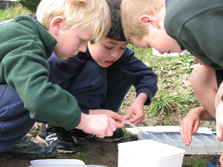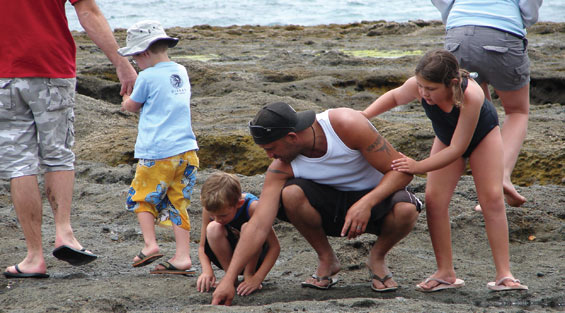Water detectives
In the “Exploring nature with children booklet”
Kids love water! You can help them explore streams, wetlands and lakes by looking at all the special creatures that live in water - water boatmen, snails, backswimmers, caddisflies, worms, damselfly nymphs, dragonfly larvae, water beetles, koura, and even fish. The diversity and numbers of invertebrates present help to determine the overall health of the water.
Exploring life in waterways requires a bit of preparation and patience but can be incredibly rewarding. Set some clear ground rules to keep your children safe and prepared for the experience.

Stream study
As a family, collect a container of water - what can you see? Drag your net or sieve through some aquatic plants or collect up a bit of sediment from the stream or pond bed. Look under some rocks? Is there anything there? Tip the collection into the water container and allow any mud and silt to settle. Use a paint brush, spoon or pipette to transfer any beetles, insects or little fish into smaller containers like screw boxes or ice cube trays (fill these with some clean water first). Get your children to draw the bugs they found. What else can they find out about them?
Remember the basic rules: always tip any collection back into the water from where it was gathered, rinse out containers and wash hands.
You will need:
- A plastic container
- An old sieve or net with a tight weave (make a net out of an old pair of stockings and a stick)
- White plastic containers or trays (icecream containers are ideal)
- Smaller plastic containers or screw boxes
- Plastic pipettes
- Small paint brushes or a spoon
- A suitable identification/field guide might be helpful
- Paper and drawing materials
Some useful websites for water investigations:

Family at Leigh Marine Reserve
